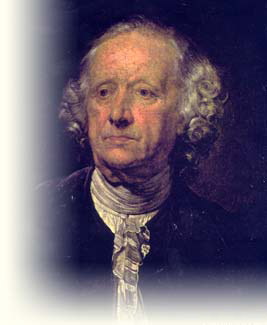Categories
Categories
- Home
- Product Information
- Thermometer to Measure Temperature
Thermometer to Measure Temperature
The dial thermometer uses a bimetallic strip wrapped into a coil. One end of the coil is fixed to the housing of the device and the other drives an indicating needle. The principle behind a bimetallic strip thermometer relies on the fact that different metals expand at different rates as they warm up. By bonding two different metals together, the coil bends, causing the needle to move. Bimetallic thermometers are not as accurate as bulb (mercury or red spirit) thermometers. The dial thermometer should require no calibration.
Inventors

 Daniel Gabriel Fahrenheit (May 24, 1686 – September 16, 1736) was a German physicist born in Danzig, Germany). He is best known for inventing the alcohol thermometer in 1709 and followed with a mercury thermometer in 1714 and for developing the Fahrenheit temperature scale. Until the 1970's, the Fahrenheit scale was in general use in English speaking countries and is to this day the commonly used scale in the United States.
Daniel Gabriel Fahrenheit (May 24, 1686 – September 16, 1736) was a German physicist born in Danzig, Germany). He is best known for inventing the alcohol thermometer in 1709 and followed with a mercury thermometer in 1714 and for developing the Fahrenheit temperature scale. Until the 1970's, the Fahrenheit scale was in general use in English speaking countries and is to this day the commonly used scale in the United States.
Fahrenheit spent most of his time in The Netherlands, where he devoted himself to the study of physics and the manufacture of precision meteorological instruments. Between 1700 to 1730, he produced many accurate mercury thermometers calibrated to his standard scale. He also discovered among other things, that water can remain liquid below its freezing point and that the boiling point of liquids varies with atmospheric pressure.


Anders Celsius (November 27, 1701 – April 25, 1744) was a professor of astronomy at the University of Uppsala, Sweden from 1730 to 1744. In 1740, he built the Uppsala Observatory and was appointed its director. He advocated the measurement of an arc of a meridian in Lapland and 1736 he took part in the expedition organized for that purpose, which verified Newton’s theory that the Earth is somewhat flattened at the poles.
In 1742, he described his thermometer scale in a paper read before the Swedish Academy of Sciences. Celsius used 0 º for the boiling point of water and 100 º for the melting point of snow. This was later inverted to put 0 º on the cold end and 100 º on the hot end, and in that form, his scale gained widespread use. It was known simply as the centigrade scale until in 1948 the name was changed to Celsius Scale in honor of its inventor Anders Celsius.

 Kelvin (of Largs) William Thomson, 1st Baron (June 26, 1824 - December 17, 1907) was a Scottish engineer, mathematician, and physicist, who profoundly influenced the scientific thought of his generation. He was a professor at the University of Glasgow from 1846 to 1899 and served as president of the Royal Society in 1890.
Kelvin (of Largs) William Thomson, 1st Baron (June 26, 1824 - December 17, 1907) was a Scottish engineer, mathematician, and physicist, who profoundly influenced the scientific thought of his generation. He was a professor at the University of Glasgow from 1846 to 1899 and served as president of the Royal Society in 1890.
Among many contributions to science, he developed and proposed in 1848 the absolute scale of temperature, which bears his name (Kelvin scale). He published more than 600 scientific papers, received dozens of honorary degrees and was granted many patents.
Among the devices he invented or improved were a tide predictor, a harmonic analyzer, and an apparatus for taking soundings in shallow and deep waters. He also redesigned the mariner's compass. He grew wealthy through his invention of a receiver for the submarine telegraph. Queen Victoria knighted him in 1866 and he was raised to the peerage with the title of Baron Kelvin of Largs in 1892. In 1902, he received the Order of Merit.
 Loading... Please wait...
Loading... Please wait... 



